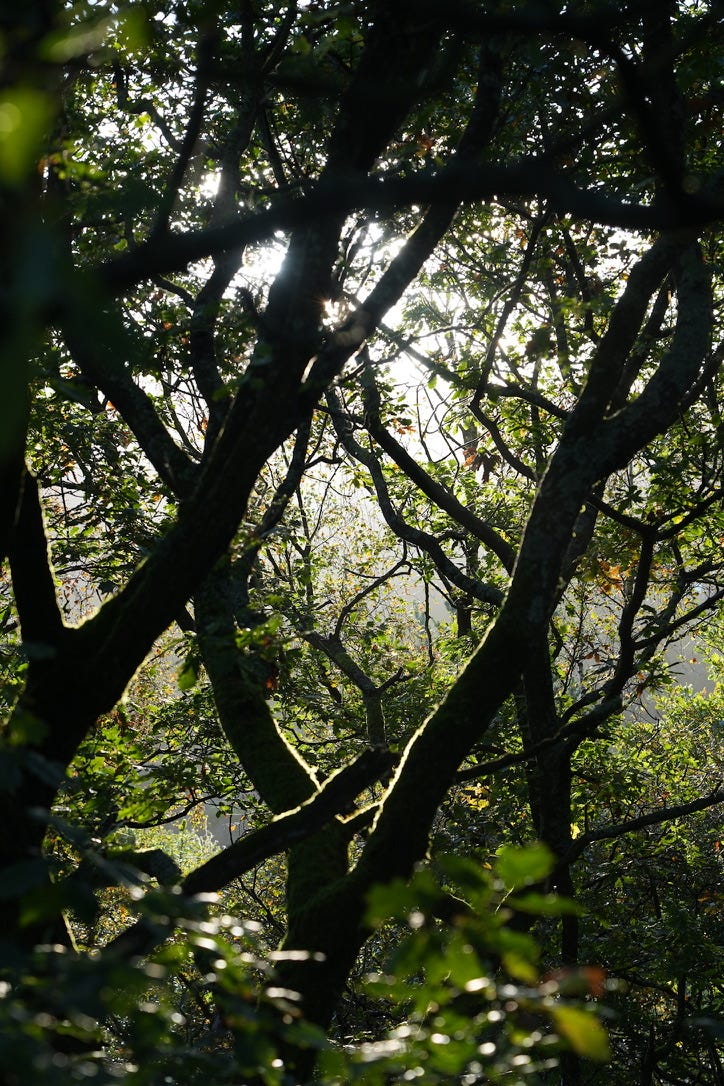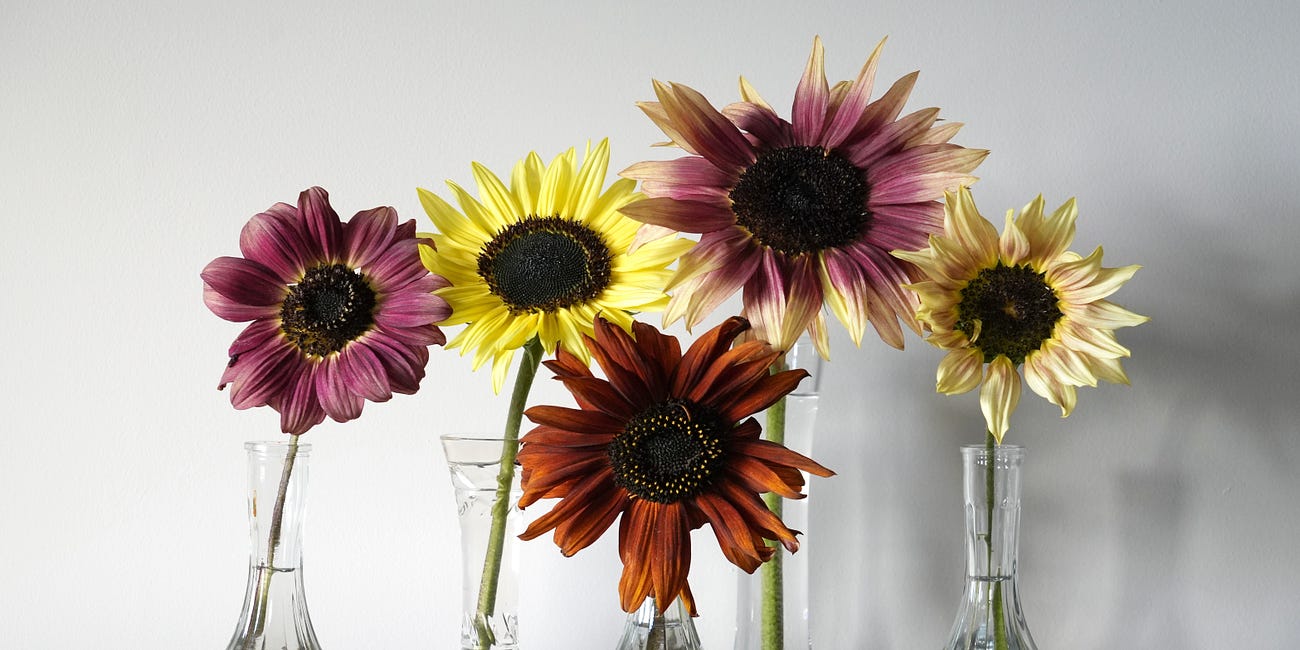I'm thinking of studying the visual essence of our local wild trees, such as oak, birch and rowan. In lots of ways I’d already started naturally by taking more notice but I want there to be creative outputs like drawings and photos that link under one theme.
The idea kinda started when we first moved here and it accelerated in autumn last year when I tried to understand and take in the changing colours through the season.

That colour study - observing what colours appeared from different trees and the patterns they create - resulted in a couple of creative outputs. The main one was to steer the autumnal colour choices of plants I added into our garden so it felt connected to the landscape. Another is a textile picture I want to try making in the coming weeks to hang in the house.
This year I’d like to take the project a step further by trying to understand the personality and shape of trees and how we learn to recognise them, and perhaps why we don't.
It’s useful to get to know plants of all sizes in more detail to help with garden planning. Often we focus on colour in gardens, which is a core consideration, but other factors are often as or more important. Factors including shape, texture and density.
Birch for instance have a very low density allowing light through and a softness to their visual texture. They are tall and narrow, their branch shape, to my eye, lend an almost tropical rainforest feel.
Oak on the other hand has a distinctive dome shape from an early age, which is as wide as it is high. Inside this dome however…
Are the most wonderful angular branches covered in moss and ferns. From this seemingly chaotic network comes order from afar.
Hawthorn is one of my favourites, so angular and chaotic but there’s a beauty to its shape I find incomparable.
While some of these trees, especially Oak, are too big for most gardens, including ours, studying trees applies to the more garden sized species, such as the hawthorn and also shrubby elder, shown above.

If, like me, you’re interested in understanding the personality of trees, or any plant in a deeper way, it’s quite simple. And the following ideas apply to any size plant, from perennial to shrub.
Make time to look: it can sound too basic but all of our lives are busy. Set aside a good amount of time to stare at the trees, their shape, their size, their colour, their trunks and branches, their leaves.
Shadows: look particularly at how and where the shadows and the light fall. First from far away for the bigger shape, then up close at the branches and trunk. My top tip for any artwork is that if you can capture that shadow and light, that will make it connect with you more than line or colour can.
Repeat through the seasons: trees change through the year of course and winter is a great time to study deciduous tree structure when their leaves drop and the skeleton is visible.
Through the years: trees also change as they age, many have a different shape and feel when they are mature to when they are saplings.
Colour, texture and density: aside from the obvious, what different shades of green do you see? How does the structure of the tree impact on its appearance? For instance, oak is denser than birch and is part of the reason it looks a darker green from afar.
Touch: what does the trunk feel like? What to do leaves feel like?
Consider how big the roots are: we can’t see the whole root network of course but how big are they?
Take photos: the act of considering the best framing for a tree and then reviewing it indoors later helps us to see things we may have missed. Taking photos from different angles and even of parts of a tree rather than the whole again makes us see the trees in new ways.
Draw or paint: don’t be held back by thinking you can’t, it’s not about the finished piece, it’s about the process of looking at a tree, thinking about how you would translate it to paper, and then trying to that gets our minds whirring and the connection with a tree closer.
I’m full of good advice for studying trees but terrible at finding the energy to do it, so I guess this newsletter is a promise to myself as much as anything. Over the next few months I plan to draw, paint and photograph as many wild trees as possible.
My personal aim is to get better at drawing trees for garden designs because, since moving to Yorkshire, my designs are bigger in scale than in London, requiring bigger trees. My other aim is just to do it because I really enjoy drawing and painting!
p.s. if you’re a paid subscriber to the full Wild Way magazine newsletter, each month I share my top performing plants for you to try with top insights and tips from testing them in my garden and designs. Here is this month’s...
WILD WAY: OCTOBER 2023
SUNFLOWERS In 2023 I went all in growing annual sunflowers. Over the years I’ve visited many National Trust gardens in autumn and fallen for the various amber and orange varieties that inevitably grew among veggies, so this year I grew a whole bunch myself!









